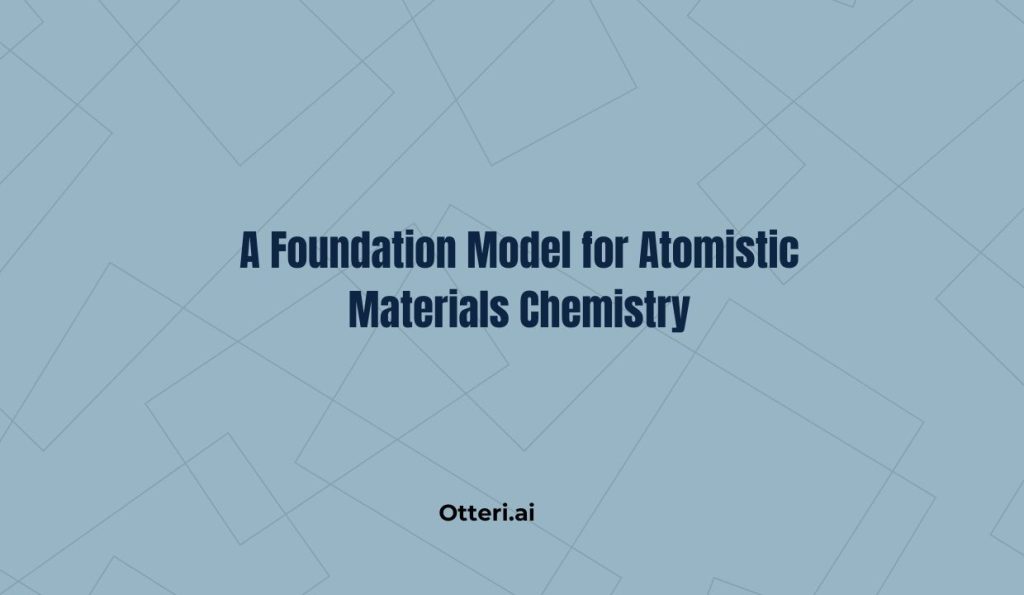
A new foundation model for atomistic materials chemistry enables data-efficient, high-accuracy predictions of atomic interactions across molecular and solid-state systems, advancing AI-driven materials discovery.
Overview
Recent advances in machine learning have led to the development of a foundation model for atomistic materials chemistry — a large-scale, pre-trained neural network designed to predict properties of molecules and materials from first principles. This model represents a significant step forward in computational materials science, offering broad generalization across chemical space with minimal task-specific training.
What Is It?
This foundation model is trained on a diverse and extensive dataset of atomic configurations derived from quantum mechanical calculations, such as density functional theory (DFT). The model learns to represent atomic environments, enabling it to predict properties such as:
Total energies
Interatomic forces
Partial charges
Reaction pathways
It follows a similar paradigm to large language models, but applied to atomistic systems — encoding structural, electronic, and energetic patterns in data-driven representations.
Key Features
General-Purpose Predictive Capability: Applicable to molecules, crystalline solids, surfaces, and nanostructures.
Data Efficiency: Achieves high accuracy with fewer labeled examples via transfer learning and fine-tuning.
Scalability: Supports large atomic systems and extended materials datasets.
Physics-Informed Modeling: Preserves symmetries and conservation laws, such as energy conservation and rotational invariance.
Scientific and Industrial Applications
Materials Discovery: Accelerates identification of novel materials with desired mechanical, electrical, or thermal properties.
Catalyst Design: Predicts surface reactions and intermediate states for heterogeneous catalysis.
Battery and Energy Storage Research: Enables rapid screening of materials for high-performance energy applications.
Pharmaceutical Chemistry: Assists in molecular conformer prediction and reactivity modeling.
Impact and Outlook
Traditional computational chemistry methods are limited by the high cost of quantum mechanical simulations. This foundation model overcomes that barrier, offering orders-of-magnitude speedups while maintaining quantum-level accuracy. It marks a shift toward AI-accelerated scientific discovery, where machine learning tools support and augment domain expertise.
As foundation models mature, they are expected to play a central role in autonomous materials research pipelines, coupling simulation, optimization, and experimental feedback in real time.
Want to learn more?
Otteri.ai hosts many more advanced AI models and research summaries related to atomistic materials and beyond.
Explore more on Otteri.ai and expand your understanding.